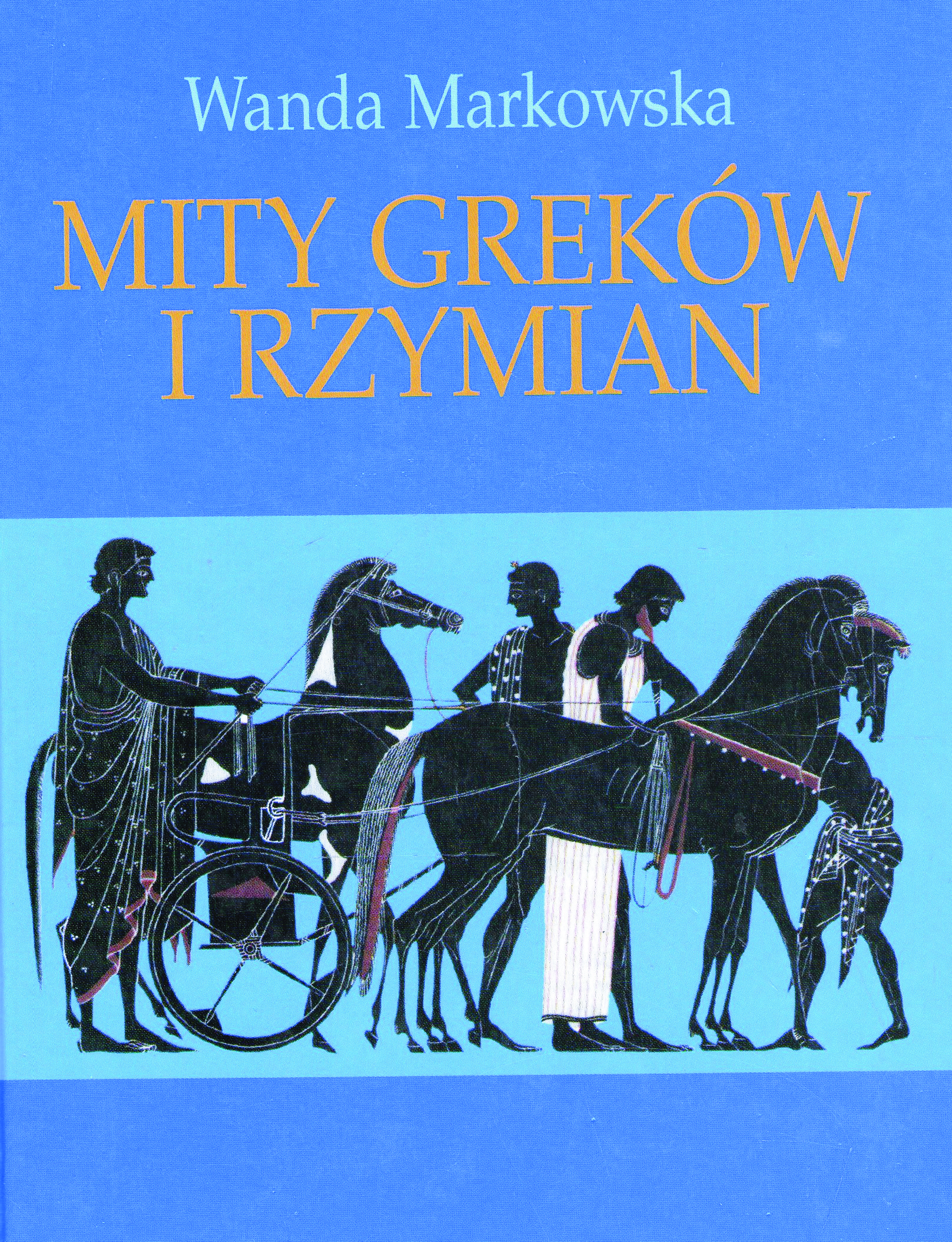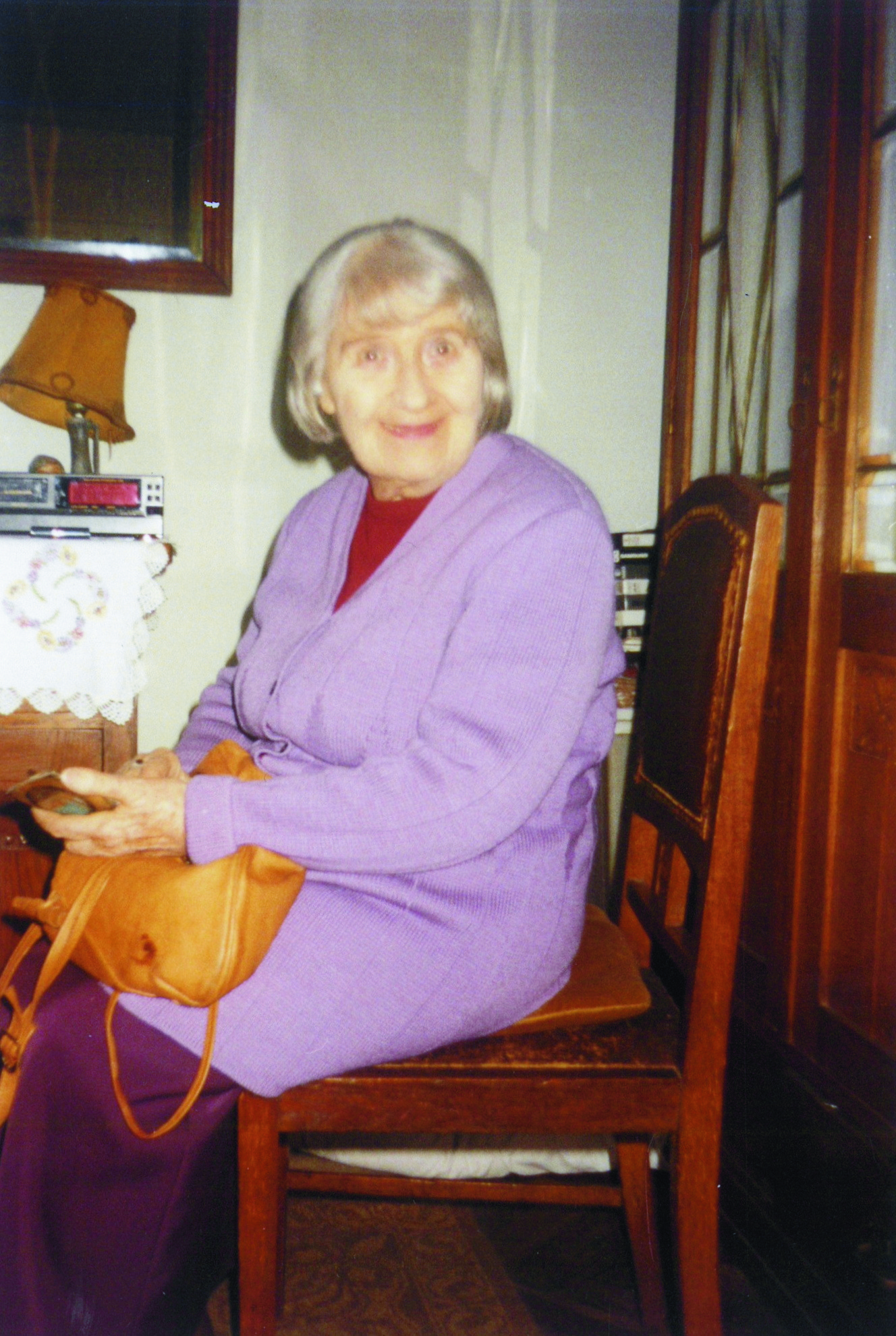Title of the work
Country of the First Edition
Country/countries of popularity
Original Language
First Edition Date
First Edition Details
Wanda Markowska, Mity Greków i Rzymian. Warszawa: Iskry, 1968, 456 pp.
ISBN
Genre
Myths
Target Audience
Crossover (Children, teenagers)
Cover

Cover from the edition Warsaw: Iskry, 2002. Cover design and illustrations by Krystyna Töpfer.
Author of the Entry:
Summary: Weronika Głowacka, University of Warsaw, weraglowacka@gmail.com
Analysis: Marta Pszczolińska, University of Warsaw, m.pszczolinska@al.uw.edu.pl
Peer-reviewer of the Entry:
Katarzyna Marciniak, University of Warsaw, kamar@al.uw.edu.pl
Elżbieta Olechowska, University of Warsaw, elzbieta.olechowska@gmail.com

Photograph courtesy of Teresa Bychawska, the Author’s Niece.
Wanda Markowska
, 1912 - 1999
(Author)
A writer, translator of German, French, and Russian literature. Author of books for children and adults: Efeb z Eleuzyny. Opowiadania greckie [Ephebe from Eleusis. The Greek Stories], 1965; Mity Greków i Rzymian [Myths of the Greeks and Romans], 1968. Together with Anna Milska, she published numerous collections of fairy tales from different cultures, Baśnie z całego świata [Fairytales from Around the World], 1946; Baśnie narodów Związku Radzieckiego [Fairytales of Soviet Nations], 1950; Księga Papugi. Baśnie perskie [Parrot’s Book. Persian Fairytales], 1951; Baśnie z dalekich wysp i lądów [Fairytales from Distant Isles and Lands], 1962, etc. She graduated in Classical and Polish philology at the University of Warsaw. During the first years of WW2 she worked at Ossolineum in Lvov (a famous library, museum and publishing house). In 1941 she moved to Warsaw and worked as a teacher. After the war she moved to Łódź and worked in a library and as editor at the publishing house Wydawnictwo Książka. In 1945 she debuted as a journalist. Two years later she went to Paris, where she studied at the Sorbonne. In 1949 she returned to Warsaw, where she worked as an editor at Państwowy Instytut Wydawniczy [State Publishing Institute]. She collaborated also with the Polish Radio.
Sources:
"Markowska Wanda", in Lesław M. Bartelski, Polscy pisarze współcześni, 1939–1991. Leksykon, Warszawa: Wydawnictwo Naukowe PWN, 1995, 257–258.
"Markowska Wanda", in Jadwiga Czachowska and Alicja Szałagan, eds., Współcześni polscy pisarze i badacze literatury. Słownik biobibliograficzny, vol. 5: L–M, Warszawa: Wydawnictwa Szkolne i Pedagogiczne, 1997, 315–317.
Wanda Markowska, iskry.com.pl (accessed: December 28, 2020).
Wanda Markowska, naukowy.pl (accessed: December 28, 2020).
Bio prepared by Weronika Głowacka, University of Warsaw, weraglowacka@gmail.com
Summary
Based on: Katarzyna Marciniak, Elżbieta Olechowska, Joanna Kłos, Michał Kucharski (eds.), Polish Literature for Children & Young Adults Inspired by Classical Antiquity: A Catalogue, Faculty of “Artes Liberales”, Warsaw: University of Warsaw, 2013, 444 pp.
The book includes stories of ancient gods and heroes. We find there the most important myths about the origins of the world, as well as the most popular ones, e.g. about Prometheus, Daedalus and Icarus, Sisyphus, or Romulus and Remus. In the edition there are many illustrations, mainly pictures of sculptures and pottery. The book is divided in two separate sections: Greek myths and Roman myths. The first part of the book begins with myths of creation and of the war with the Giants. Then come profiles of the most important gods: their origin, family relationship and the most important stories associated with them. Finally, come the adventures of heroes and mortals. In the second part of the book we read about beliefs of the ancient Romans, including stories about the most important gods, lesser deities, divination, priests and sacrifices.
Analysis
This book is the third one in which the author collects and organizes the myths of ancient Greece aiming them at young readers, and the first edition where Greek and Roman aspects appear together. Her first version was entitled Greek Myths adapted for adolescents [Mity greckie w opracowaniu dla młodzieży], and was published in 1949* and then reprinted several times. The second was entitled Greek Myths [Mity greckie], and was published in 1953**, becoming the basis of this edition, as the text of the Greek part was only slightly modified or not modified at all. The book was widely read to children by parents and by children themselves (about 5–6 years old and up), often repeatedly. The composition is well-designed, even if some stories are not presented “chronologically”, they still flow cohesively. Reminiscent of Ovid’s Metamorphoses’ style, the narrative keeps evoking connections between the stories or naturally ends one myth to begin another.
Markowska’s adaptation of Greek myths was the most favoured among those young readers for whom Parandowski’s mythology could seem too serious and less exciting. The reason for that popularity is the author’s use of language adapted to the target audience: vibrant, coloured, and picturesque descriptions strongly affect young readers’ imagination. The language is not old fashioned but consistently elegant and literary. This makes the readers easily dive into the world of myths and think about the mythical characters as living people. The book reads like a good novel, where children can find adventure, heroes, friendship, sacrifice, love and treason, hatred, revenge, the fight for power and so on, all nearly tangible and brought to life due to the expressive language. The adaptation is made subtly; it is light and polite – ad usum Delphini – but it does not eliminate issues that are controversial and difficult for children. For example, in presenting various extramarital love affairs, the author highlights their narrative values but does not avoid drastic scenes as they are frequent in mythology. Fights, murders, sacrifices, rapes, betrayals etc., are there, although, without undue emphasis and gory details.
The last, 6th, extended edition of Greek Myths was published in 1965, and then the text was incorporated into the Myths of the Greeks and Romans and not separately reprinted. However, it is still appreciated by the generations who grew up reading it.
The second part of the book which presents Roman antiquity is not only a completely separate section but almost seems composed by a different person. The author abandons the lively narration. The Roman part does not describe myths, but rather provides a history of religion. It systematizes beliefs, cults, rites, sacrifices, and customs, presenting some historical facts and events related to particular divine characters. Numerous deities who accompanied Romans in every moment of their lives are mentioned and described in detail. The author, in a more official style, provides so much information that it becomes more difficult to effortlessly learn, retain, and engage with than was the case in the Greek part. After about 70 pages of descriptions of official cults, celebrations, and customs, Markowska adds the myth of Aeneas, told according to Vergil and the legends of the origins of Rome (Romulus and Remus, rape of the Sabine women and deification of Romulus and Hersilia) according to Livy, again described in her former narrative style adapted to children. Interestingly, she continues to include difficult and unfortunate matters. For example, when Aeneas meets Helenus of Troy in Epirus, the reader learns about the tragic fate of Hector’s widow, Andromache. A captive of Achilles’ son, Neoptolemus also called Pyrrhus, the murderer of Priam and her little son Astyanax, she became a sex slave and gave birth to Pyrrhus’ son Molossus (here called Mollos). Abandoned when Pyrrhus married Hermione, the daughter of Menelaus and Helen of Troy, she was given as a gift to Helenus. Another example of a woman’s suffering is provided by the character of Dido, who, abandoned by Aeneas, commits suicide – she pierces her heart with her lover’s sword and burns on the burial pyre.
* W. Markowska, Mity greckie w opracowaniu dla młodzieży, Warszawa: Książka i Wiedza, 1949.
** W. Markowska, Mity greckie, Warszawa: Państwowe Wydawnictwo „Iskry”, 1953.


